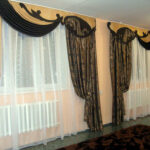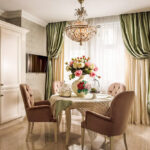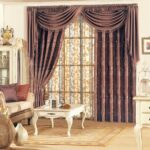Production and use in the interior of the swag
A chic ensemble of curtains makes the window stylish, visually expands the room and brings completeness to the interior. Curtains with a swag or a semicircular lambrequin look especially beautiful.
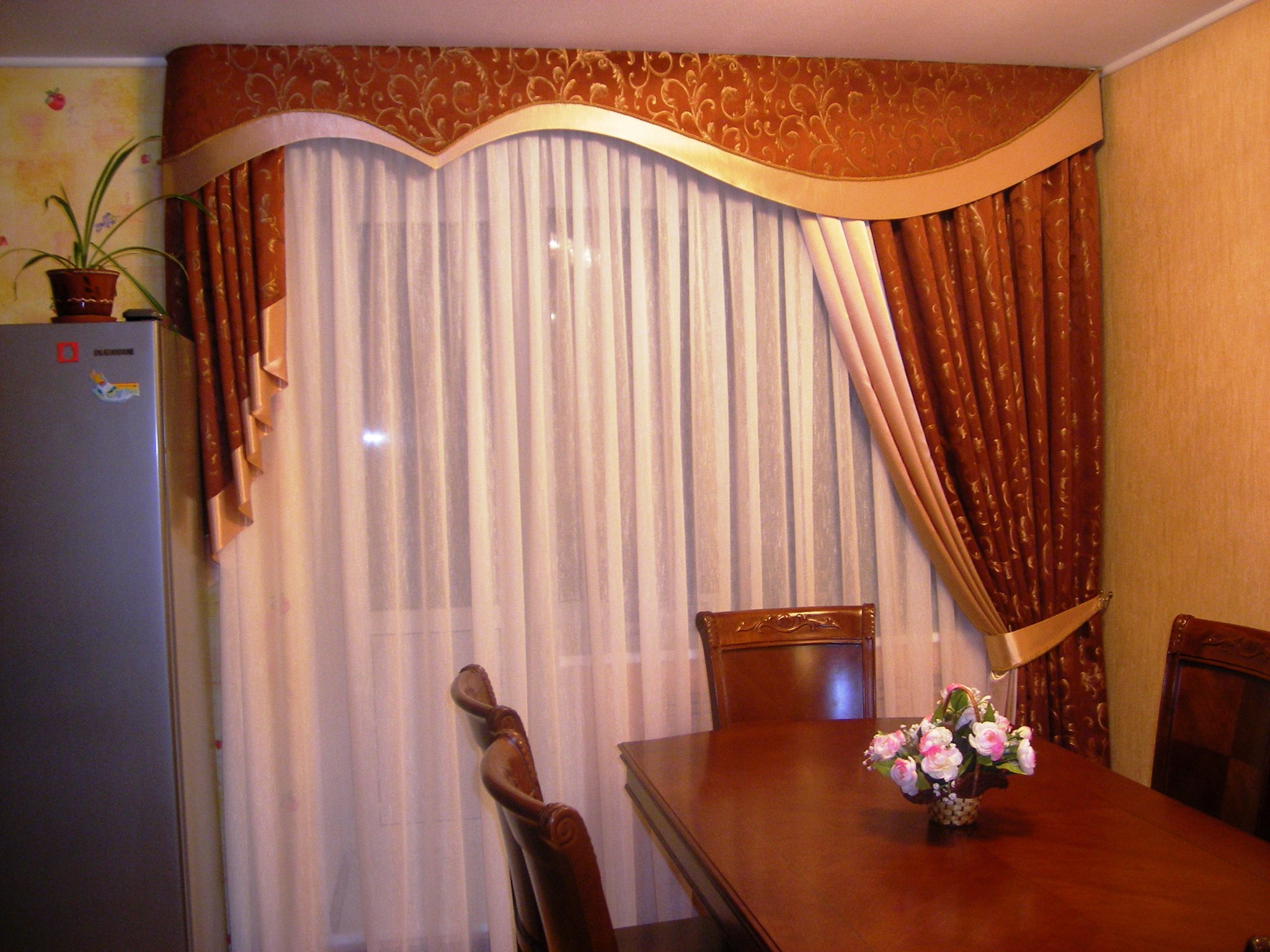
The semicircular drapery gives the window irresistible charm and sophistication. Sewing this product is not as difficult as it seems. It is enough to know the basic technology.
What is swag
First you need to understand: what is a swag. Swag is a special type of lambrequin with a semicircular drapery. Translated from English, this word means "garland". Indeed, equal semicircles look like this decoration. These semicircles are attached to a separate line of the cornice, before which a special drapery is made.

The decoration can be one semicircle or scallop in the center, or it can be created from several semicircles-scallops. In the latter case, it really looks like a garland. In this case, the scallops can be asymmetrical or located exactly along the entire length of the cornice.

Swag is best suited for a classic interior with a lot of decorative elements. But with a skillfully thought-out design, it is also suitable for interiors in Provence, Art Nouveau, Scandinavian styles.
How to make a swag with your own hands
Despite the fact that the swag looks like a very complex element, even a novice design master can make it.

The main stages of how to sew do-it-yourself swag for curtains for beginners:
- Choice of design.
- The choice of the method of fastening the folds.
- Pattern creation and cutting.
- Sewing products.
- Suspension.
Preparation of tools and material
To make a stylish lambrequin, you will need the same tools as for sewing curtains:
- Millimeter paper for patterns
- Scissors
- Pencil
- chalk
- Threads
- Sewing machine
The material can be the same from which the curtains or curtains are made. It can be made of contrasting fabric. For example, for a Provence-style interior, you can choose a fabric for curtains printed in a flower, and swagi can be made of plain fabric.

Lambrequin can be decorated with fringes or rhinestones. For beginners, it's best to try making a model out of a single layer of fabric. It is easier to work with thin fabrics. In the future, window decoration can be complicated by making it two-layer.

Advice. Swagi made of heavy curtain fabrics visually reduce the window and expand the room. Curtain tulle decorations visually increase the height of the ceiling and windows. Double-layer lambrequins with a rolling density of fabrics make the ceilings taller and the windows deeper.
Pattern and size
It will be easy to create a swag pattern for beginners with your own hands. The simplest cutting is rectangular models, the more complex ones are semicircular.

To do this, you need to decide on three parameters:
- Height
- Width
- The method of fastening folds
The height of the decoration depends on the height of the window.

It should be remembered that the swag will permanently close part of the window. Therefore, making it too long is not worth it. The classic height is 1/6 of the distance from the ceiling to the floor.
Advice. A long lambrequin will look good in the bedroom, where it will create the necessary comfort and light twilight. In the living room, where a lot of light is required, it is better to hang a short swag made of light fabrics.

The width of the product depends on its design. It can be a single semicircle in the center or a garland of several scallops in a row. After the width and length have been calculated, it is necessary to create a pattern of a paper swag model and attach it to the cornice. Trying on the pattern will allow you to check the correctness of the calculations and the choice of design.

If everything is in order, then you can start creating a pattern. First, the width of the product is measured, then its length. After that, you need to calculate the number and depth of folds. This will allow you to find out the total length of the side edge of the swag.

After that, the pattern is finally drawn. Swag can consist of a semicircle or rectangle. The semicircle is more difficult to cut, and the rectangle is more difficult to drape and secure at the end.
Making a swag
After all the preparatory procedures have been completed, you can proceed to creating and assembling the product.

Step-by-step instructions on how to sew a swag:
- The fabric needs to be cut.
- The semicircular product must be suspended for several hours by attaching weights to the bottom. This is necessary for the fabric to stretch. If you skip this step, then the fabric is deformed already during use.
- Collect the folds on the rail and try on the cornice. Adjust the pattern by trimming off excess fabric.
- When the result is satisfactory, you can hem the fabric at the bottom and top.
- After that, the final folds are laid and a beautiful shell is formed.
- The folds are hemmed or fastened to the curtain tape.
- All that remains is to hang the product.

Jewelry of different designs has their own characteristics.
Asymmetric
An asymmetrical two-layer version, parts of which smoothly pass from one to another visually makes the window deeper and more romantic. Such a piece of jewelry looks more sophisticated, but it is not so difficult to assemble it. The pattern for it will be the same as for a regular shell. The length of each element may be slightly longer.

It is necessary to cut and sew each scallop separately. Then they are hung on the cornice with alternate weaving of edges.
Advice. Asymmetric models, where one edge is smaller in width, will look beautiful. The narrower edges should be positioned closer to the center of the window, and the longer ones should be towards the end. This type of decoration will make the window more open and at the same time retain its sophistication and pomp.
Equilateral
Symmetrical decoration with equal sides is the easiest to accomplish. The most important thing here will be to calculate the number and length of shells. After that, each element is sewn separately and at the end they are fixed together on the curtain tape.
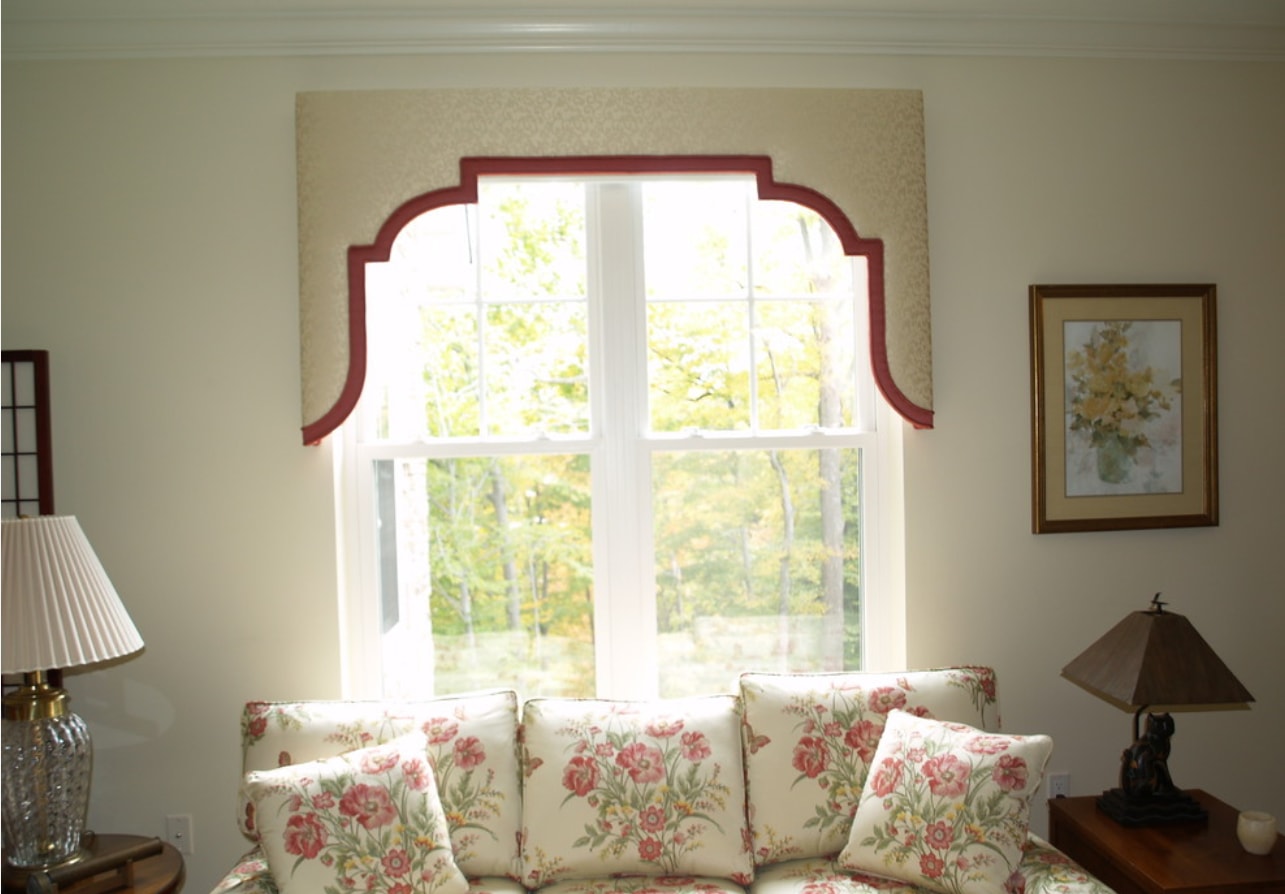
Important! Equilateral shells need to be secured to the tape, not immediately hung. Otherwise, they will move unevenly along the cornice, which will lead to their deformation.
For lambrequin
The option looks stylish, where the swag is intertwined with the classic lambrequin. It is better to cut this decoration in the shape of a rectangle.After that, folds are laid on both sides.

One end is attached to the front of the lambrequin, and the other to the back. After that, the whole structure is planted on the curtain tape and hung.
With the transition to de jabot
Decorations with a smooth transition in de jabot along the edges of the curtains make the window deeper. This option allows you to use semicircles even for a small window. For this option, a separate pattern is created, where one edge is longer and beveled.

Because of this, this product is also called one-piece. Here it is important to beautifully process the lower part, as it will be visible from the dejabo. The dangling end will form nice rungs or denticles.
Application in the interior
Initially, swagi were used only for ceremonial premises. But they are so beautiful that they gradually migrated to ordinary houses. These decorations look best in a classic interior, where they complete the pompous look.
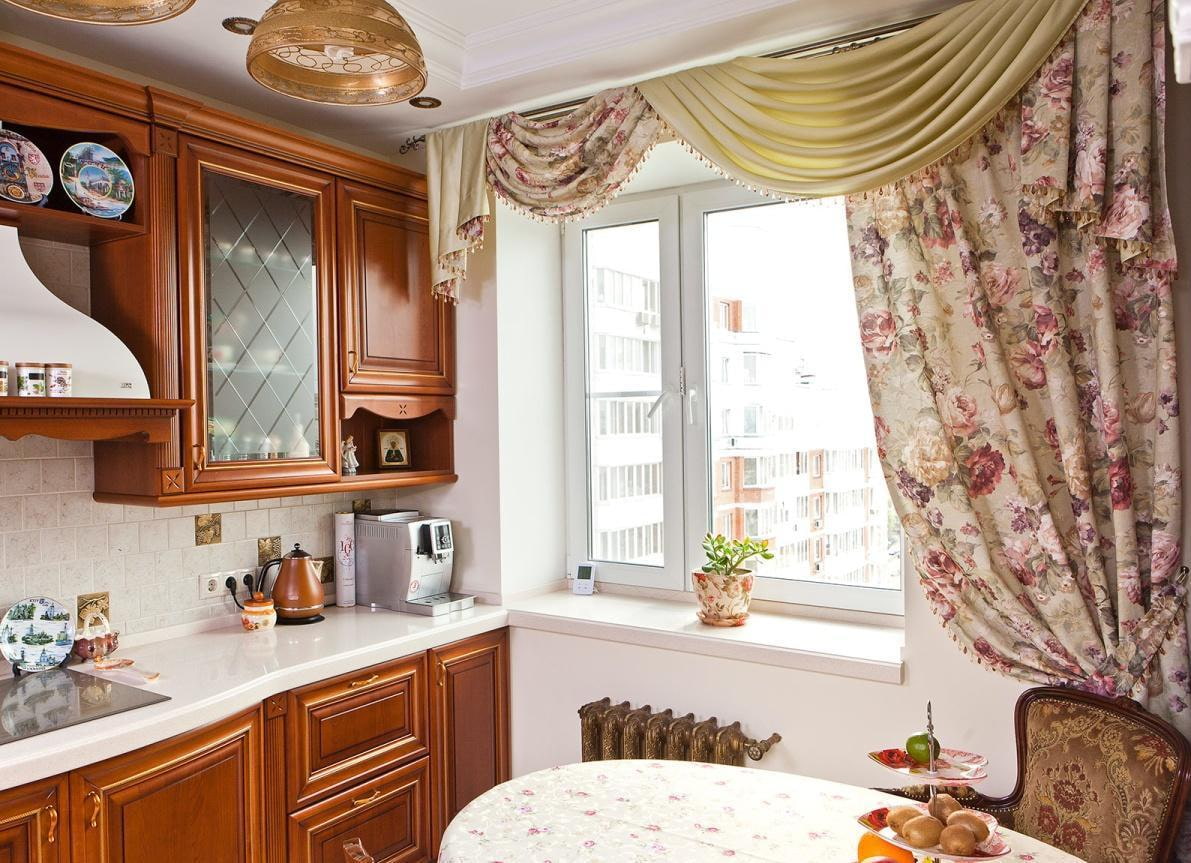
The use of additional elements will be appropriate here: fringes, lining, rhinestones. Swagi will add romanticism to the room in the Provence style. A product made of thin, translucent fabrics will look beautiful.

For the Art Nouveau style, products with a rectangular pattern of an ascetic design are suitable.
Scandinavian-style rooms will be decorated with multi-layered models of fabrics of different textures - from velvet to transparent tulle. This will create an unusual play of light on the window.

For hi-tech, you can also create stylish swagi. Here it is better to pick up a rigid fabric, which forms creases instead of folds. This will give completeness to the image and an unusual look to the window.
Video: what are the lambrequins?





